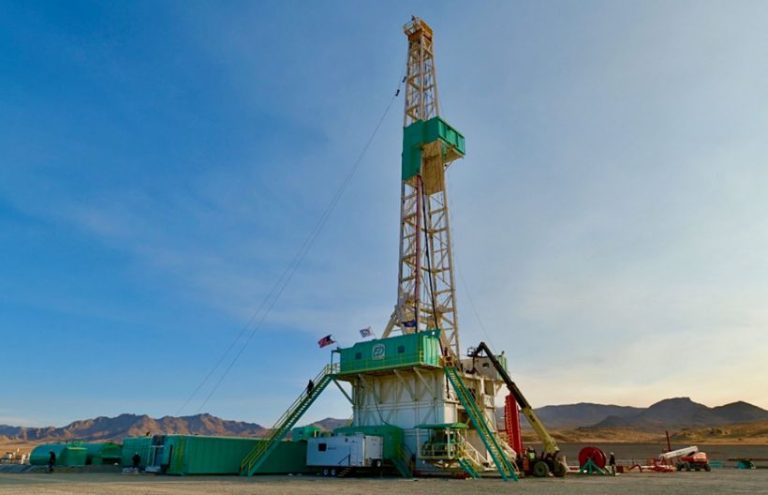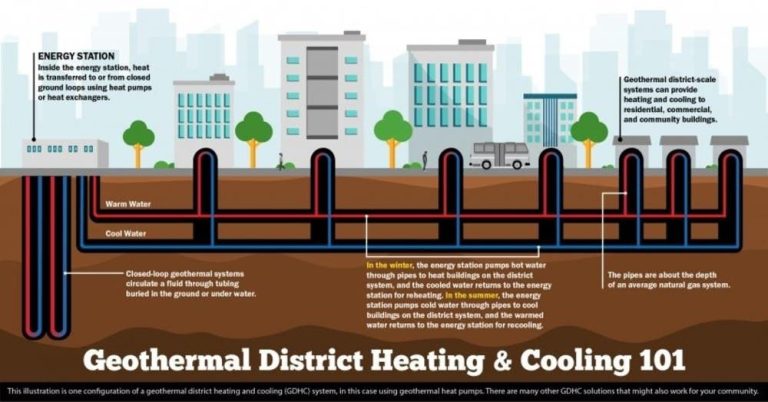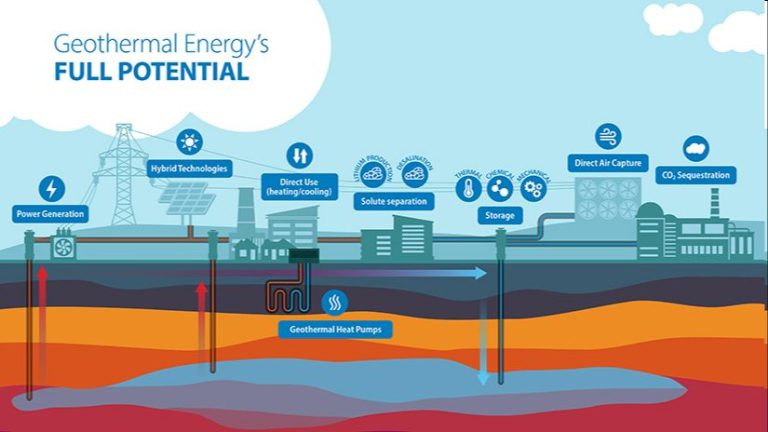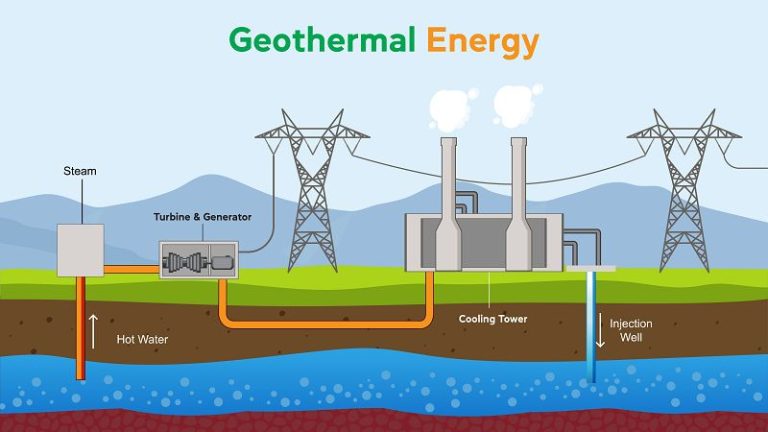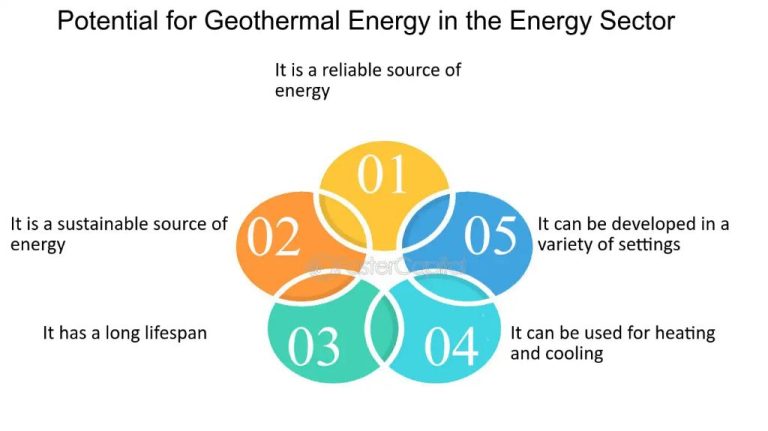Is Geothermal Energy All Around The World?
What is geothermal energy?
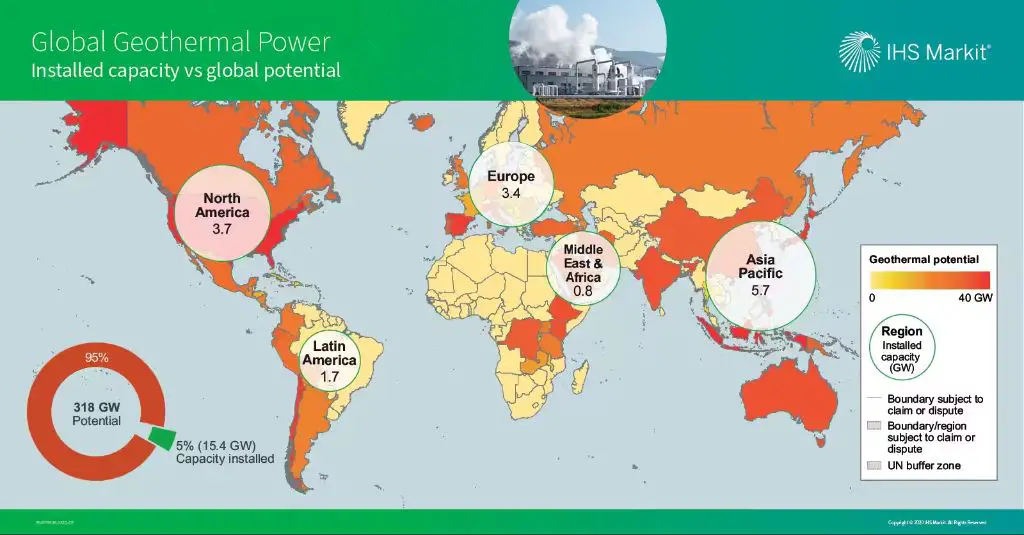
Geothermal energy is heat generated and stored underneath the Earth’s surface. It is a clean and sustainable energy source that utilizes underground reservoirs of hot water (Eia.gov). The high temperatures are mainly attributed to the decay of radioactive elements, like potassium-40 and thorium-232, in the Earth’s core. This heat then gets transferred to surrounding rock and water reservoirs (TWI-Global.com).
Geothermal energy works by tapping into underground reservoirs of steam and hot water and bringing them to the surface. These naturally heated fluids can then be used to produce electricity in power plants or provide direct heating for homes, businesses, agriculture and other uses (Energy.gov). Unlike solar and wind power, geothermal energy is not affected by changing weather conditions and is available consistently 24/7.
Global potential for geothermal energy
According to recent estimates, geothermal power has the technical potential to supply a significant portion of the world’s electricity needs. A 2021 report from the International Renewable Energy Agency (IRENA) found that identified geothermal resources could produce over 2,000 TWh of electricity per year globally. This is equivalent to doubling the world’s current geothermal power generation capacity (source).
Geothermal potential is spread unevenly across the world, as it depends on geological factors like subsurface heat and permeability. Areas along tectonic plate boundaries, volcanic belts, and hotspots like Iceland and Indonesia have particularly high resource potential. According to IRENA, over 80 countries could meet most of their electricity needs with geothermal power (source). However, many countries have yet to seriously pursue geothermal energy development.
With further growth and technological improvements, experts estimate geothermal could feasibly provide 3-16% of global electricity production by 2050. Realizing even a fraction of geothermal’s potential could significantly boost the share of renewable energy and reduce reliance on fossil fuels worldwide.
Countries leading in geothermal energy today
Some of the top countries generating the most geothermal energy currently include:
The United States leads globally, with over 3,900 megawatts (MW) of installed geothermal capacity as of 2023, according to ThinkGeoEnergy [1]. Geothermal supplies about 0.4% of total U.S. electricity generation. California generates the most geothermal power.
Indonesia comes second with around 2,418 MW of installed capacity as of 2023 [1]. Geothermal accounts for about 5% of Indonesia’s electricity mix. The country has 40% of the world’s potential for geothermal resources.
The Philippines ranks third globally with 1,916 MW of geothermal capacity. Geothermal provides about 18% of the country’s electricity generation. The Philippines has the second-largest known geothermal resources after Indonesia.
Other top countries include Mexico, New Zealand, Italy, Iceland, Kenya, Turkey and Japan. Together the top 10 countries account for over 90% of global geothermal power generation.
Direct use of geothermal energy globally
Geothermal energy is not just used for generating electricity. Direct uses of geothermal energy provide heating and cooling for buildings, grow fruits, vegetables, and flowers year-round, aid in drying crops, heat water at fish farms, and several other applications.
According to the International Geothermal Association (IGA), the installed capacity for direct use of geothermal energy worldwide is over 70 GWth (gigawatts thermal) as of 2020 [1]. China leads in installed capacity for direct use with over 25 GWth, followed by Turkey, Iceland, Japan, India, and the United States. Some examples of direct use applications include:
- District heating systems in Reykjavik, Iceland and Klamath Falls, Oregon, USA.
- Greenhouse heating and aquaculture in New Zealand and Hungary.
- Bathing and swimming in hot springs in Japan and Iceland.
- Industrial process heating in food processing and chemical plants in New Zealand and China.
The growth outlook for direct use geothermal applications remains strong. Many countries are still discovering new resources and expanding infrastructure for district heating systems and other direct uses. With its abundance and reliability, geothermal energy has the potential to meet a substantial portion of the world’s direct heat requirements.
Geographic distribution of geothermal resources
Geothermal resources are not evenly distributed around the globe, but rather are concentrated in areas with volcanic activity and tectonic plate boundaries. According to the National Renewable Energy Laboratory (NREL), high-temperature geothermal resources are concentrated in the western United States, Alaska, Hawaii, Japan, Iceland, New Zealand, Indonesia, the Philippines, Mexico, Central America, the Andean countries of South America, the Great Rift Valley countries in Africa, and island nations in the Atlantic, Pacific and Indian Oceans.
Other areas with significant geothermal potential include the Caribbean, the Mediterranean, and East Africa. In Europe, geothermal resources are found in Italy, Iceland, Turkey, France and Germany. China also has abundant geothermal resources.
Areas along tectonic plate boundaries or geologic hotspots like volcanoes and geysers tend to have higher temperature resources that are best suited for geothermal power production. Lower temperature geothermal resources, useful for direct heating applications, can be found in most parts of the world including the upper Midwest and eastern United States.
Barriers to wider adoption
Despite geothermal energy’s benefits as a renewable, baseload energy source, there are several challenges limiting more widespread adoption globally. High upfront capital costs, resource risk uncertainties, regulatory hurdles, and lack of public awareness have all constrained growth.
Drilling geothermal wells is expensive, with costs frequently exceeding $1 million per well. There are risks of not finding a productive reservoir or encountering technical difficulties during drilling. Investors can be wary of these financial risks and geological uncertainties (source).
Permitting and regulations also pose hurdles in some areas. Lengthy environmental reviews or restrictions on drilling can discourage geothermal development (source). Public concerns about induced seismicity are another barrier.
Additionally, geothermal energy lacks recognition among the general public as a clean, renewable resource. This limits political and community support needed for projects (source).
While abundant geothermal resources exist worldwide, these barriers constrain the energy source from reaching its full potential. Overcoming financial and regulatory obstacles as well as raising public awareness will be key to wider adoption.
Environmental impacts
Geothermal energy production can have both positive and negative impacts on the environment. On the positive side, geothermal energy is considered a clean, renewable energy source. Geothermal power plants emit little to no greenhouse gases or other air pollutants (1). The U.S. Department of Energy reports that geothermal power plants release less than 1% of the carbon dioxide emissions of a fossil fuel plant (2). Geothermal energy production also requires a small land footprint compared to other energy sources.
However, there can also be downsides. Hot wastewater from geothermal reservoirs may contain toxic chemicals that must be disposed of properly to avoid contaminating water supplies (1). The wastewater can also have high mineral content that may negatively impact ecosystems when released (2). Additionally, geothermal plants require continuous water flow, which can strain water resources in arid regions. There is also a risk of subsidence (ground sinking) if water is over-extracted (1). Lastly, geothermal sites can produce noise and emissions like hydrogen sulfide that affect local air quality.
Overall, experts agree geothermal energy has lower environmental impacts compared to fossil fuels. But responsible management practices are needed, like injecting wastewater back underground, to mitigate potential downsides (3). With proper siting and operations, geothermal offers a clean energy source to help meet global electricity demand.
Sources:
(1) https://www.ucsusa.org/resources/environmental-impacts-geothermal-energy
(2) https://www.eia.gov/energyexplained/geothermal/geothermal-energy-and-the-environment.php
(3) https://www.fws.gov/node/265252
Future outlook and growth potential
Projections show significant potential for growth in global geothermal capacity additions over the coming decades. According to the Center for Sustainable Systems, electricity generated from geothermal plants is projected to increase from 17 billion kWh in 2022 to 37.2 billion kWh in 2050.
The global geothermal energy market size is also expected to see strong growth, rising from $6.6 billion in 2021 to $9.4 billion by 2027 according to MarketsandMarkets research. This represents a compound annual growth rate of 7.2% between 2022-2027.
Statista forecasts that global electricity generation from geothermal energy will amount to 99.73 billion kWh in 2024, with an expected compound annual growth rate of 4.1% between 2024-2028.
Key drivers for increased geothermal capacity globally include rising energy demands, favorable government policies, and technological advances that are making geothermal more cost-competitive.
New technologies and innovations
Geothermal energy technology is rapidly evolving, with new innovations that are making it more viable and cost-effective. Some key emerging technologies include:
Enhanced Geothermal Systems (EGS): Also known as engineered geothermal systems, EGS allows geothermal resources to be accessed from areas with hot dry rocks through hydraulic fracturing. This greatly expands the potential locations for geothermal energy. According to the European Parliament, EGS could provide 100 GWe in Europe and over 500 GWe globally.
Co-production of geothermal resources: Technologies like integrated gasification combined cycle plants allow the co-production of electricity as well as lithium extraction from geothermal brines. This improves project economics. https://about.bnef.com/blog/next-generation-geothermal-technologies-are-heating-up/
Hybrid geothermal plants: Combining geothermal energy with biomass or solar thermal energy can enable around-the-clock renewable power generation. The modular design also reduces project development costs and risks.
Advances in drilling technologies: New techniques like spallation and thermal spallation drilling can operate at higher temperatures and require less equipment, reducing drilling costs substantially. Companies are also using big data and AI to optimize drilling.
With sustained R&D and policy support, these innovations can unlock geothermal’s vast potential globally. Lower costs and expanded site locations will be key to scaling up geothermal deployments around the world.
Conclusion
In conclusion, geothermal energy has significant potential for growth globally but is not evenly distributed or utilized worldwide currently. While certain countries like the United States, Philippines, Indonesia, Turkey and New Zealand lead in geothermal energy production and consumption, many countries have untapped geothermal resources that could be better leveraged. Barriers like high upfront costs and geological/technical limitations have slowed wider adoption, but new technologies and ongoing investments may help overcome these challenges. Significant potential remains for direct use applications like heating buildings in addition to electricity generation.
Overall, geothermal energy resources are abundant but unevenly distributed around the world. With supportive policies, technological advances, and strategic investments, geothermal could play a larger role in the global renewable energy mix and help nations achieve their emissions reduction goals in the years ahead.

